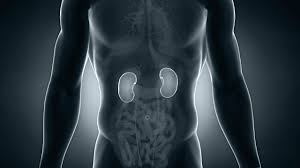Calculi or stone is a solid/ crystal sedimentation formed in the urinary system. It is also called as Urolithiasis. It is mainly formed from the dietary minerals and waste materials found in the urine. It is usually comprised as a compound called Calcium oxalate or Phosphate.
These are result of an accumulation of dissolved minerals on the inner surface of urinary system like Kidneys etc. It may have different sizes. Some of them have the size of a pin head and may be pass unnoticed through urine without causing any symptoms. Some of them have enough size to obstruct urinary passage and can cause symptoms like pain,etc.
Symptoms:
The most common symptom is severe pain, usually, in the side of the abdomen, that’s often associated with nausea.
People may also experience:
Pain areas: In the back or side part of the body
Pain types: Can be severe, sharp, or sudden in the abdomen
Pain circumstances: Can occur during urination
Gastrointestinal: Nausea or vomiting
Urinary: Blood in urine or frequent urination
Urinary stones are so prevalent in india that about 15% people suffer from it at least once in their lifestime. In land of huge populations and equally huge number of health advsiors , many of the fake miracle drugs and home remedies are becoming popular. Al;ong with tem many myths about it are also popular.
Some of the myths about kidney and urinaray stones
Myths 1.
Drinking beer helps to avoid kidney stone formation.
Fact : consuming beer causes urination, that is the reason why many people believe it so. Practically , craving for beer is more stronger reason than its medical use. Rather a kidney stone might aggravate with alcohol or beer.
Myth No. 2: Getting a kidney stone feels like a stomachache.
Fact: Getting a kidney stone actually feels similar to a contraction — and some patients say the pain can be more severe than labor.
The pain is typically colicky, coming in waves for intervals at a time. It can range from a sharp, stabbing sensation, to the sort of pain that comes from menstrual cramps.
Myth No. 3: You feel the pain in your lower back, where your kidneys are located.
Fact: The pain actually originates a little lower in the abdomen or gut, after the kidney stone passes into the ureter.
The reason it hurts is that it’s like a cork going down your ureter, which is shaped as a funnel and gets skinnier as you get to the bladder. The kidney stones then start to block the flow of urine and, if enough time passes, can cause the kidney to descend, causing terrible pain and nausea.
Myth No. 4: Drinking milk, which has calcium, will cause kidney stones.
Fact: Calcium is not the enemy.
Many people are causing kidney stones because they have a lack of calcium in their diet,. Having a glass of milk or butter milk with your meal and consuming foods with magnesium, which will help bind the oxalate and help prevent kidney stones.
Myth No. 5: Drinking soda can cause kidney stones.
Fact: Drinking fluids with phosphoric acid and high sodium levels can cause kidney stones.
It’s not cola itself that causes kidney stones, but an ingredient in cola called phosphoric acid that can lead to an increased risk of kidney stone formation. Cola is also a diuretic, which can make your urine more concentrated with salt and promote kidney stones.
MYTH 6: Surrendering the Salt Shaker Is a Sure Thing
Sometimes patients are asked to reduce their salt intake, but if their salt intake is already low, then no amount of salt reduction will prevent stones from forming. But how low is it, really?
“If salt intake is high and if you’re forming calcium stones in particular, then we may recommend reducing salt intake. That’s a big problem because people have so many contributors to salt in their diet and they don’t even realize it. The salt shaker accounts for about 10 percent of a person’s salt intake, so it’s really a matter of educating patients.”
MYTH 7: The Internet Knows All
All four major categories of stone have subcategories within them, so looking at nutritional contributors of stones gets very individualized. There’s never going to be a one-size-fits-all stone prevention diet.
Every time I finish a talk or meet with a patient, that’s the main message I give to patient. It’s not about going to the internet and picking out a diet,. Everyone has slightly different stone risk profiles and health needs, and people have different dietary habits on top of that. We can make stone prevention work; it’s just a matter of giving it individualized attention.
Myth 8 : drinking lots of water daily prevents recurrence of urine stone.
The fact is that drinking adequate water may be useful to avoid the inititating the pathology. But I have personally observed that many of the patients who have tendency of recurrent kidney stones fail to avoid its recurrence inspite of drinking lots and lots of water.
Adequate hydration means taking in water or other liquids so that there is enough fluid to reach the kidneys. The kidneys can then make a dilute urine (not a concentrated urine) and stone formation is less likely. One needs to make sure that there is adequate fluid reaching the kidney to keep the urine dilute.
The majority of calcium, oxalate or uric acid reaches the kidney after eating a meal. Two glasses of water post 1 hour afetr meal allows plenty of fluid to reach the kidney so that these materials do not become too concentrated and crystallization does not begin.
